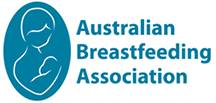Exercise
Vitality Exercise
It is widely recognised that exercise is vital for our health and wellness. Exercise is Medicine, and like medicine it can be used to address a variety of issues, concerns or improve performance. However medicine needs to be adequately dosed to achieve the desired impact on health and wellness.
The Australian Department of Health and Aged care note that exercise can
- Reduce the risk of health issues,
- high blood pressure,
- high cholesterol,
- type 2 diabetes,
- bone and joint problems,
- heart disease and
- some cancers
- maintain a healthy weight
- reduce the risk of falls and injury
- give you more energy
- improve your sleep
- reduce stress and anxiety
- improve concentration
- improve your mental health.
The Department of Health and Aged care recommends 30 minutes of moderate activity on most but preferably all days. This 30 minutes can be accumulated in smaller blocks of exercise throughout the day. Older people who have stopped physical activity, or who are starting a new physical activity, should start at a level that is easily manageable and gradually build up the recommended amount, type and frequency of activity.
Moderate exercise would be considered exercise in which an individual can notice their breathing rate has increased, but can still speak in a full sentence. Typically this level of activity would correspond with a 4-6/10 on the modified Rate of Perceived Exertion Scale below. This scale is interpreted individually for each person, it even can be different on the same day, for the same individual. So this scale can be used for each individual on any given day.
The type of exercise can be modified for each individual to allow for
- Injury, Aches and Pains
- Exercise history
- Target body tissue.
Injury, Aches and Pains
Very few seniors within our program are lucky enough to not have any aches or pains or injuries. For the majority of our participants our clinicians take the time to prescribe exercise that achieves the desired impacts without aggravating pain or injury. Often we use the following pain traffic light guide.

Pain scores
We ask our clients to rate their pain on a scale of 10. Where 10/10 is the worst pain imaginable and 0/10 is no pain at all. Everyone has a different pain score on any given day, so this can be adapted and used on a daily basis, for each individual.
Green Light
0-3/10 Pain - In our experience mild pain with exercise is short lasting, and often does not lead to aggravation.
Amber Light
4/10 pain - Typically we describe this as increased pain, but no worse as an immediate result. It is important to monitor your symptoms following this exercise and adjust accordingly. Often we call this level proceed with caution.
Red Light
≥5/10 Pain
Pain that is 5 or more we typically reevaluate and modify the exercise to reduce the risk of overdosing the exercise.
Exercise History
Exercise history is very important to take into account when prescribing exercise. The depth and breadth of physical capacity in seniors can be quite large. For some participants simply building a foundation level of exercise is a great achievement, however for some others they need a little advice on how to get the most out of their existing exercise routine.
Target Tissue
Medications are frequently prescribed to target certain conditions or body processes. We believe exercise should be prescribed in the same manner.
Muscle
We would like all of our participants to become more robust and resilient during our program. Strong muscle is important to help you continue to do the things you love the most.

Muscular strength, gets you out of the house and onto the bowling green, or golf course. It helps us to play with grandkids, or get to the local club for a Probus meeting. In allows us to travel and go on journeys to unknown places.
As muscle strength deteriorates it is common for seniors to reduce their activity due to fatigue or concern over tolerating the activity, or even due to a fear of falling.
No matter your Age most people have the capacity to build strength with exercise.
Typically we use body weight and resistance training. During body weight and resistance training we aim to exercise at a level in which the body recognises an increase in the demand on it. If repeated enough and progressed over the time body adapts to become stronger.
One principle of effective strength training is training at a desired level of 1 Repetition Maximum (1RM) is the amount of weight you could only successfully achieve once. For seniors we try and aim to achieve at least 30% of 1 RM, through regular progression.
An example of 30% of 1 Repetition Maximum would be if Alice could lift 10kg once, then we would aim to lift 3kg, for approximately 8-15 repetitions and three sets. These principles help us to dose exercise effectively to improve muscle strength. We would not ask Alice to try and lift here maximum, we have tools to have our best educated guess to get close to the real number. We do this to avoid injury or aggravation to the body.
The American Physical Therapy association recognised in 2015 that underdosing exercise in seniors is a risk to the profession, as doing so would result in ineffective treatment recommendations.
Muscle responds best in seniors if we can exercise at a level at least at 30% of 1 repetition maximum. This level is suggested to be the minimum viable level to have a meaningful impact on falls reduction Lopez, 2017.
Bone
Many seniors would like to address their Bone health through exercise. Certain types of exercise are suitable for achieving this. The most efficient exercises at building bone are known as osteogenic exercises and they involve
- Impact loading
- Resistance training
An example of impact loading would be climbing stairs or small jumps, or even bounding down the drive way.
Resistance training is common in the development of muscle strength and higher intensity or higher effort training can improve bone density also. These activities include lifting weights.
Brain and Balance
Seniors often report a reduction in their. Balance is a multiple system strategy to keep you on your feet. The system combines

● Vision
● Inner Ear or vestibular system
● Brain
● Muscles and Joint receptors that provide proprioception, or your bodies awareness of where it is in space.
Your therapist will assist you to challenge your balance, with the goal to be more confident on your feet, by challenging this system with progressive exercises. This could involve
● Reaching for an object whilst feet are together
● Walking heel toe
● Walking over uneven surfaces
● Fast stepping
Everyone is different, and exercise is prescribed accordingly.
Exercise is medicine and the best medicine is individually prescribed at a dose suitable to that individual. If you would like to learn more about exercise please get in touch, or visit our links page.
Contact Back on Track Physiotherapy
Request an appointment or simply enquire about our services or team – it could be the first step to feeling "Back on Track".
Corowa Clinic
Phone: 02 6033 0933
Finley Clinic
Phone: 02 6033 0933
Berrigan Clinic
Phone: 02 6033 0933




Acknowledgement of Country
We Acknowledge the Traditional Custodians of the lands where we work and the places in which we live. We pay respect to Ancestors and Elders, past, present and future
© Copyright 2023 | All Rights Reserved | Back on Track Physio | Web Design by ACM Digital
